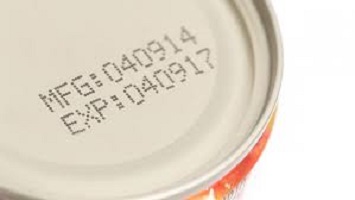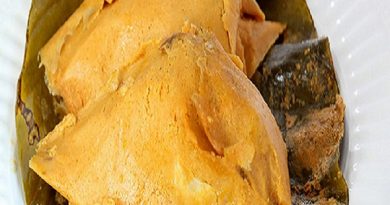Differences Between Best Before and Expiry Date of Food
Differences Between Best Before and Expiry Date of Food

- Best before date vs. Expiry date. Any Difference?
- Expiry date vs. expiration date
- The importance of the expiration date on food products
- What does “best before” mean?
- How long after the best before date
- Best before date format
- How long after a best before date can you eat something?
- Best before date vs. expiry date Tagalog
Recommended >>>>
Differences Between Best Before and Expiry Date
Do you have any idea what the date on the back of a food container means? Continue reading to uncover the distinctions between these crucial dates.
Consumers frequently confuse the “best before” date with the “expiration date.” That’s why, in most cases, goods that have passed their “best before” date end up in the garbage.
Even so, this would have been perfectly tasty. So, what does it all mean if the “best before date” differs from the expiration date? How can we collaborate to reduce food waste?
Many people are unaware that the expiry date and the best before date are not synonymous. Many individuals confuse the two and believe they mean the same thing.
Differences Between Best Before and Expiry Date
Let me use this opportunity to inform you that the terms “expiry date” and “best before date” are two distinct terms that imply different things and serve different functions.
In this post, I’ll explain what each date stamp/marking on food packaging signifies, as well as introduce you to the terms “use by” and “durable life date.”
However, because the expiry date and best before dates are the ones most regularly used on food items, I will place a greater focus on them.
But first,
What is the importance of the expiration date on food products?
What is the relevance of a food’s expiration date? The expiration date refers to the time when the food loses its microbiological and physical stability, as well as the nutrient content stated on the label.
That means that if you want to get the maximum nutritional value out of food, you should eat it before it expires.
How to Determine a Product’s Expiration Date
Can I figure out the product’s expiration date? How to Determine the Expiration Date Based on the Lot Number
Lot number example: 190322403
- The first two numerals (19) indicate the year of manufacture (2019);
- The next two digits (03) indicate the month (March) or the date of manufacture (March).
- The next two numerals (22) correspond to the year’s day.
- The company’s plant number is shown in the next figure (4).
- The figures (03) denote that day’s product batch.
Please note: because lot numbers can contain long combinations, there’s a large chance of human error throughout the recording procedure.
Differences Between Best Before and Expiry Date: Terms and Definitions (Date Markings on Food Packs)
What is the definition of the “best before” date?
The “best before” date on food packaging indicates when the food’s shelf life has expired.
Durable life, according to the Canadian Food Inspection Agency, is “the expected amount of time that an unopened food product will preserve its freshness, taste, nutritional value, or any other properties specified by the manufacturer when stored under appropriate conditions.”
This date can be found beneath the words “best before” or “Meilleur avant” on a package.
This date informs customers that the unopened goods will be of excellent quality till that date. The key to this date is that it is contingent on the product being handled and stored correctly following the product’s specifications.
This indicates that if you don’t follow the instructions for handling and storing a product, its quality will deteriorate before the best before date. This also means that if a package is opened, the “best before” date no longer applies.
The phrases “Best Before” and “Meilleur Avant” or “B.B./M.A.” are used to indicate the Best Before dates. And they’re not to be confused with the expiration date.
What is the packaging date? The Difference Between Best Before and Expiry Dates
Because they look so similar, packaging dates and best before dates can be confused. Packaging dates, on the other hand, are displayed on retail-packaged foods having a shelf life of 90 days or fewer.
The packaging date, sometimes known as the “packed on” date, must be displayed beside the durable life span. A best before date or the number of days that the product will keep its freshness can be used to determine the durable life duration.
The packaging date, when combined with the product’s durable life information, tells the user how long the unopened product will stay fresh.
What is the meaning of expiration date? Differences Between Best Before and Expiry Date
A best before date is not the same as an expiry date. These dates are required for certain items with certain nutritional content that may deteriorate after the expiration date has passed.
In other words, after the expiration date, the item may no longer contain the nutrients listed on the label.
Formulated liquid diets, foods sold by a pharmacist, nutritional supplements, meal replacements, and infant formula all require expiry dates.
If a food item has passed beyond its expiration date, it should be thrown away rather than consumed.
Other terminology to be aware of
Because of the varying language on the different sorts of dates on the packaging, there can be some confusion.
For packed fresh yeast, for example, the terms “use by” and “employez avant” may be used instead of “best before.”
Even if the terminology is different, this date must still be provided in the same form and manner as a best before date.
Other words that have been used include:
- Sell by
- Prepared on
- Freeze by
- Manufactured on
These alternative wordings are allowed on food labels as long as the label complies with all standards and requirements.
Food companies should be aware of the various types of wording that may appear on packaged food goods, as well as what they signify.
Food companies should be aware of the various types of wording that may appear on packaged food goods, as well as what they signify.
All food that is received and stored in the food business must be examined for best before and expiration dates. Food must not only be handled and kept properly but also consumed within a reasonable time range.
The First In, First Out (FIFO) approach should be used to store food.
Is it possible to sell food that has passed its “best before” date?
A sales ban is not triggered by an expired “best before” date. In the food and beverage industry, products that are approaching or have already passed their “best before” date are frequently discounted to increase sales.
What is the distinction between “best before” and “expiration” dates?
Customers are notified when a product’s expiration date has passed. The “best before” date, on the other hand, implies that the food is no longer in perfect condition as of that date.
The freshness, taste, aroma, and nutrition may all be lost. It does not always imply that the food is unsafe to consume.
The best before date is a quality indicator.
The “use by” date, which only applies to perishable commodities like fresh fish or meat, is another term that gets mixed up with this. Once the “use by” date has passed, dispose of them immediately.
Once the “use by” date has passed, dispose of them immediately.
The Bottom Line
Here’s everything you need to know about the differences between best before and expiry date
Expiry dates refer to the food’s nutritional value. Best before dates refer to the food’s quality.
Both terms relate to food that has been kept in its original packaging and has not been opened.
An expiry date, according to the Canadian Institute of Food Safety, refers to the nutritional content of food after a given date.
The “best before” date refers to the shelf life of the food in its unopened state.


